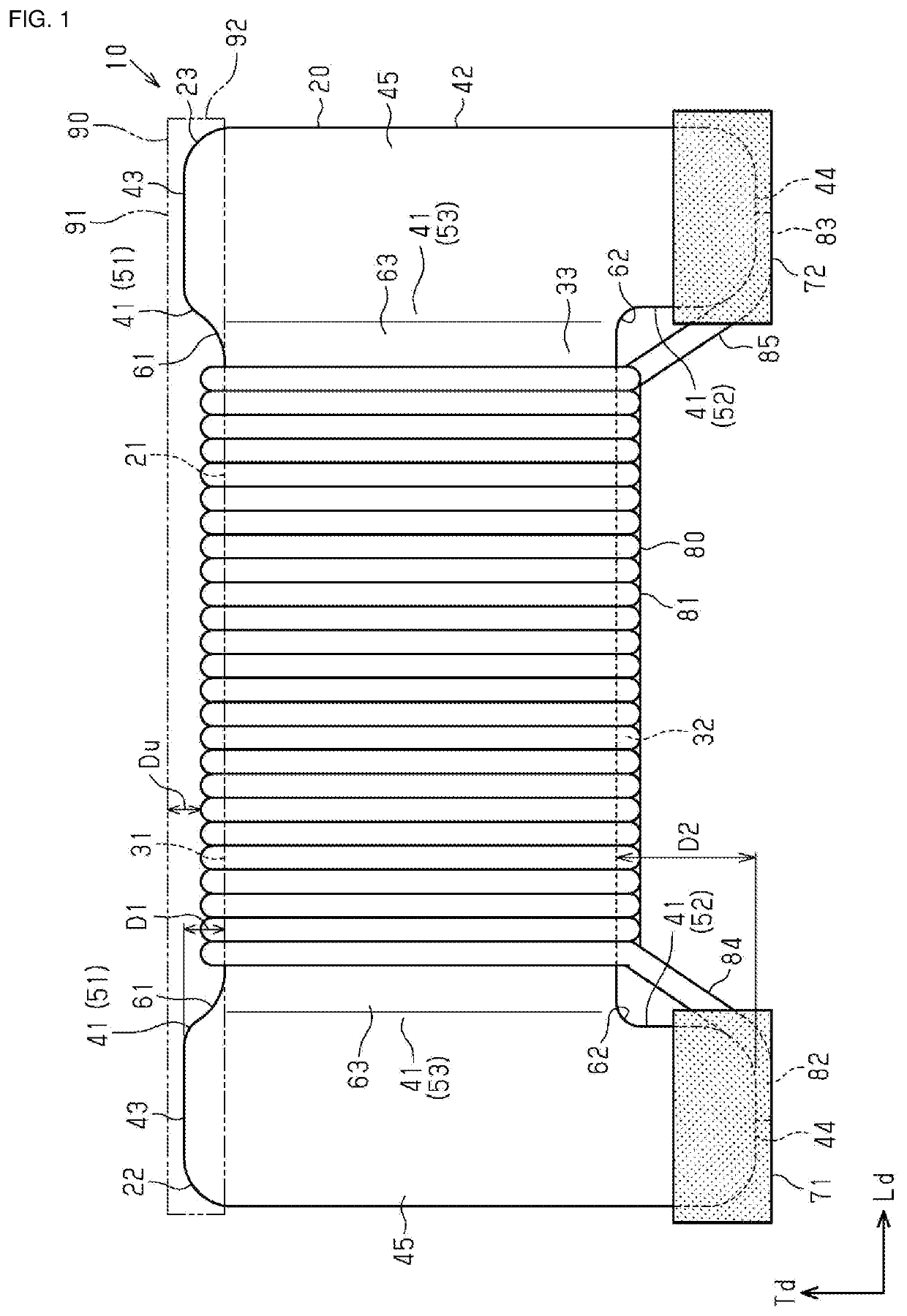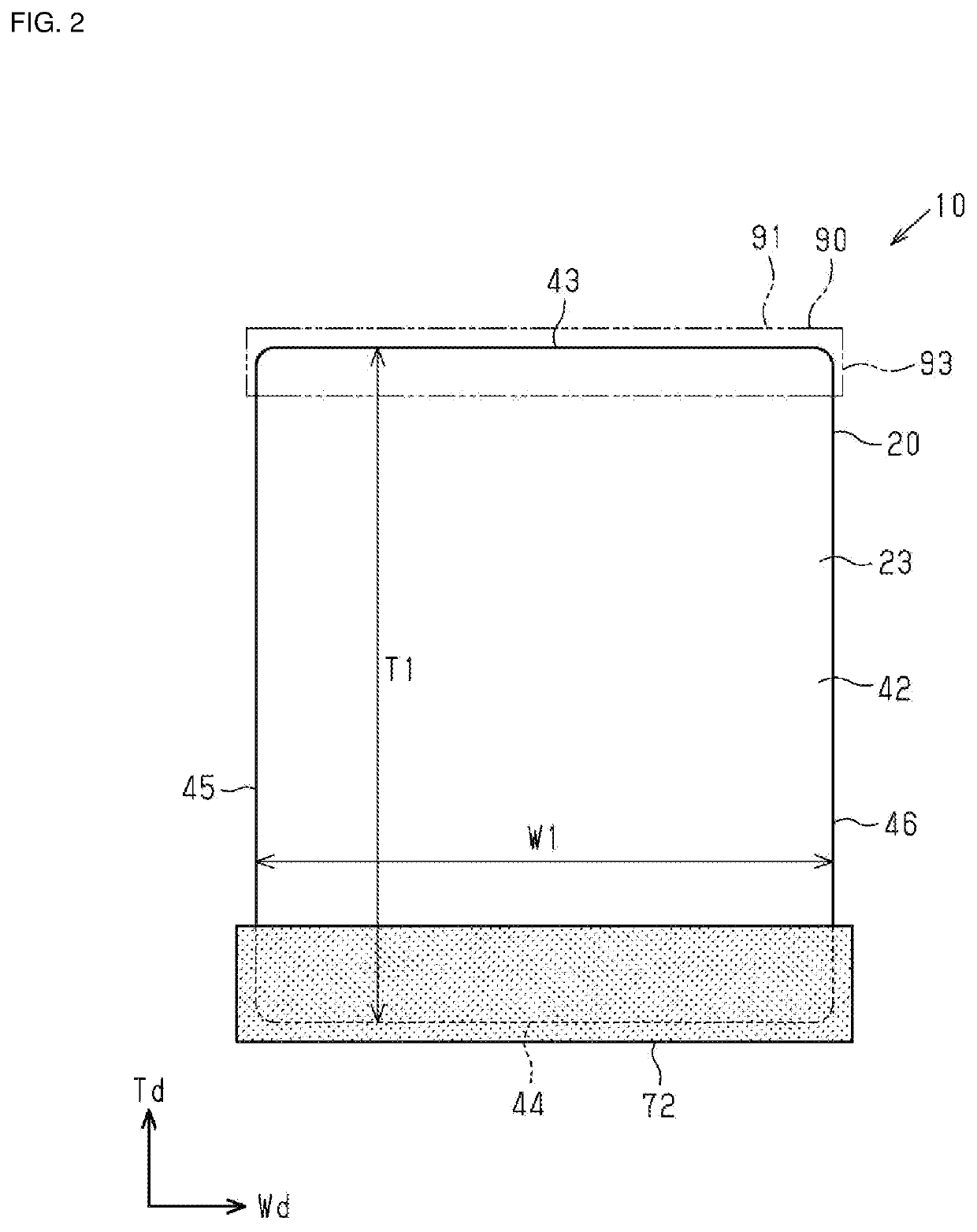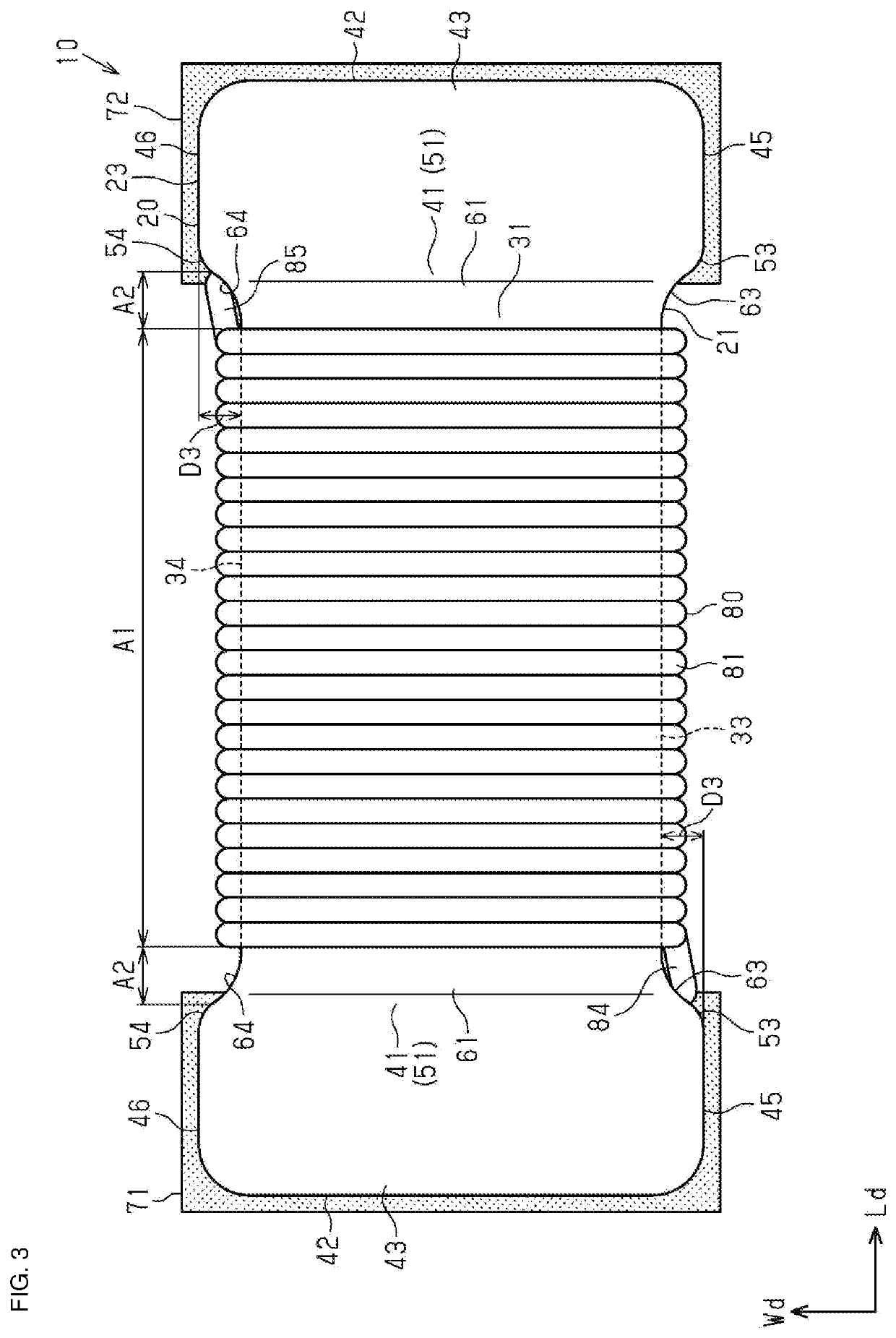Wire-wound inductor component
a technology of inductor components and wires, which is applied in the direction of inductances, inductances with magnetic cores, basic electric elements, etc., can solve the problems of high molding difficulty of cover members, difficulty in achieving height reduction, and height reduction, so as to achieve height and size reduction
- Summary
- Abstract
- Description
- Claims
- Application Information
AI Technical Summary
Benefits of technology
Problems solved by technology
Method used
Image
Examples
Embodiment Construction
[0022]Hereinafter, an embodiment will be described.
[0023]It should be noted that the accompanying drawings may illustrate by enlarging constituent elements in order to facilitate understanding. The dimensional ratio of the constituent elements may be different from actual one or may differ from that in other figures. Although hatching is used in the cross-sectional view, hatching of some constituent elements may be omitted for ease of understanding.
[0024]A wire-wound inductor component 10 illustrated in FIG. 1, FIG. 2, FIG. 3, and FIG. 4 is a surface-mounted component mounted on, for example, a circuit board or the like. The wire-wound inductor component 10 may be used in a variety of devices including, for example, portable electronic devices (mobile electronic devices) such as smart phones or mobile electronic devices (e.g., smart watches) for wrist donning.
[0025]The wire-wound inductor component 10 includes a core 20, a first terminal electrode 71, a second terminal electrode 72,...
PUM
 Login to View More
Login to View More Abstract
Description
Claims
Application Information
 Login to View More
Login to View More - R&D
- Intellectual Property
- Life Sciences
- Materials
- Tech Scout
- Unparalleled Data Quality
- Higher Quality Content
- 60% Fewer Hallucinations
Browse by: Latest US Patents, China's latest patents, Technical Efficacy Thesaurus, Application Domain, Technology Topic, Popular Technical Reports.
© 2025 PatSnap. All rights reserved.Legal|Privacy policy|Modern Slavery Act Transparency Statement|Sitemap|About US| Contact US: help@patsnap.com



